The recent warm weather has brought out many orchids, find out five species you can encounter this spring and summer.
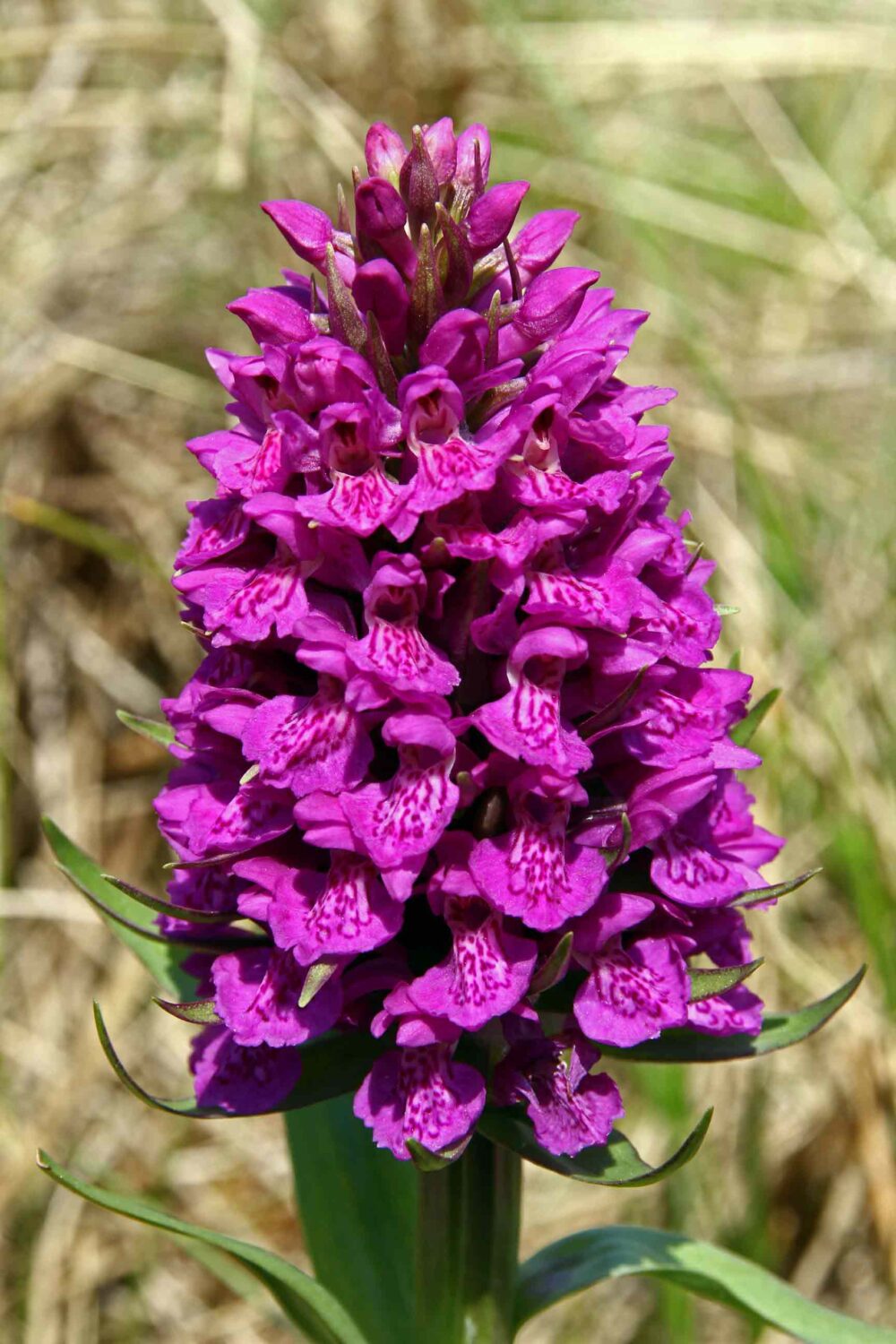
Northern Marsh Orchid
One of our earliest orchids to come into flower from June to July, is the Northern Marsh Orchid, this purple orchid can be found on grasslands, margins of ponds and woodland clearings.
It is characterised by purple dashes with occasional loops on the lip of the flower which, is weakly divided into three lobes, coming together to form a diamond-shaped lip.
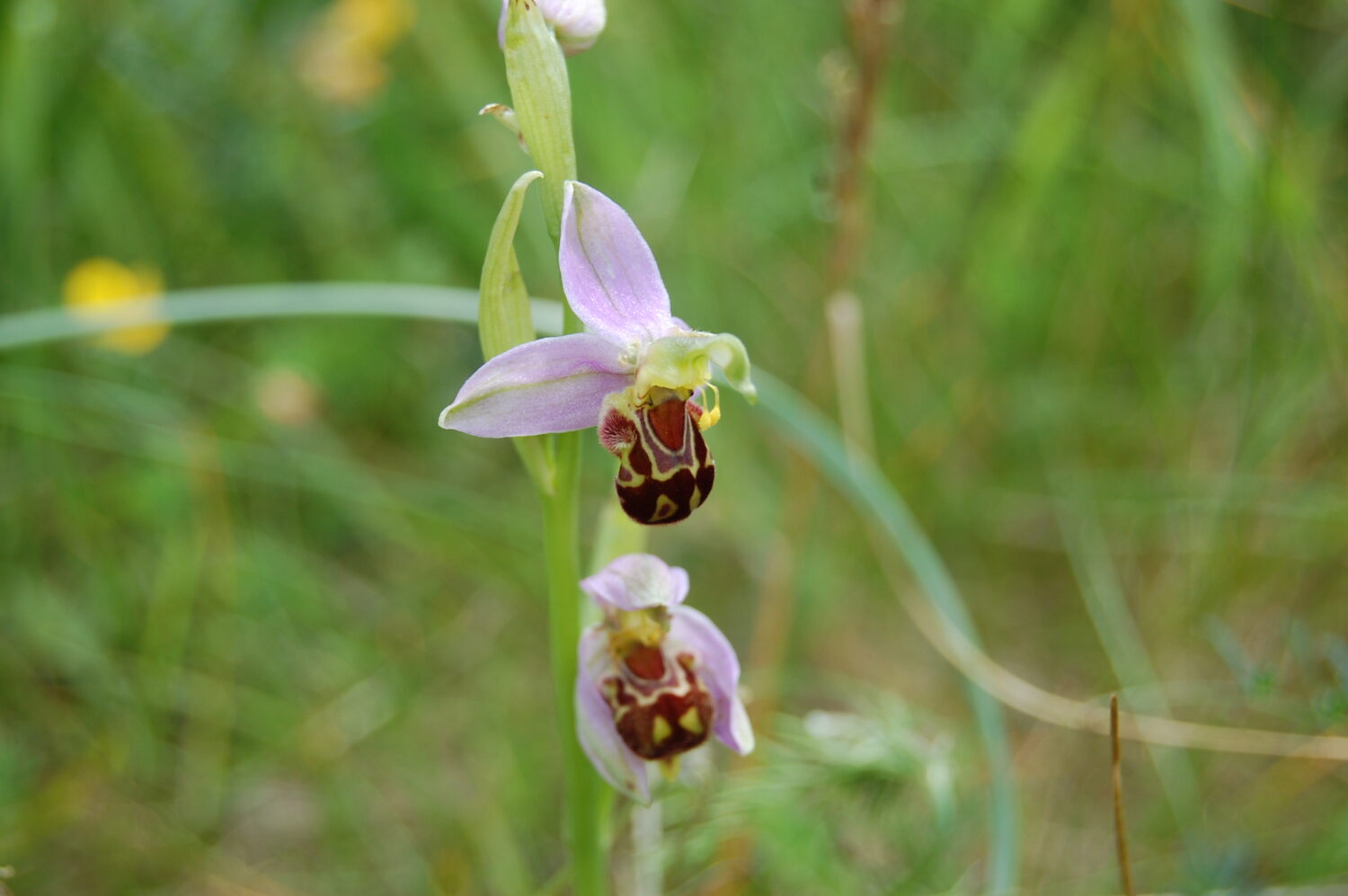
Bee Orchid
This beautiful orchid gets its name from its resemblance to bees. The lip is maroon coloured with yellow loops and markings. It has three large, purple sepals, easily mistaken for petals. The true petals are the two green antennae-looking structures and the lip itself.
This orchid can be found in grasslands, roadside verges and has even spread into our cities. It is one of the orchids that has benefitted from the warmer temperatures and is spreading northwards. It flowers from June to July.
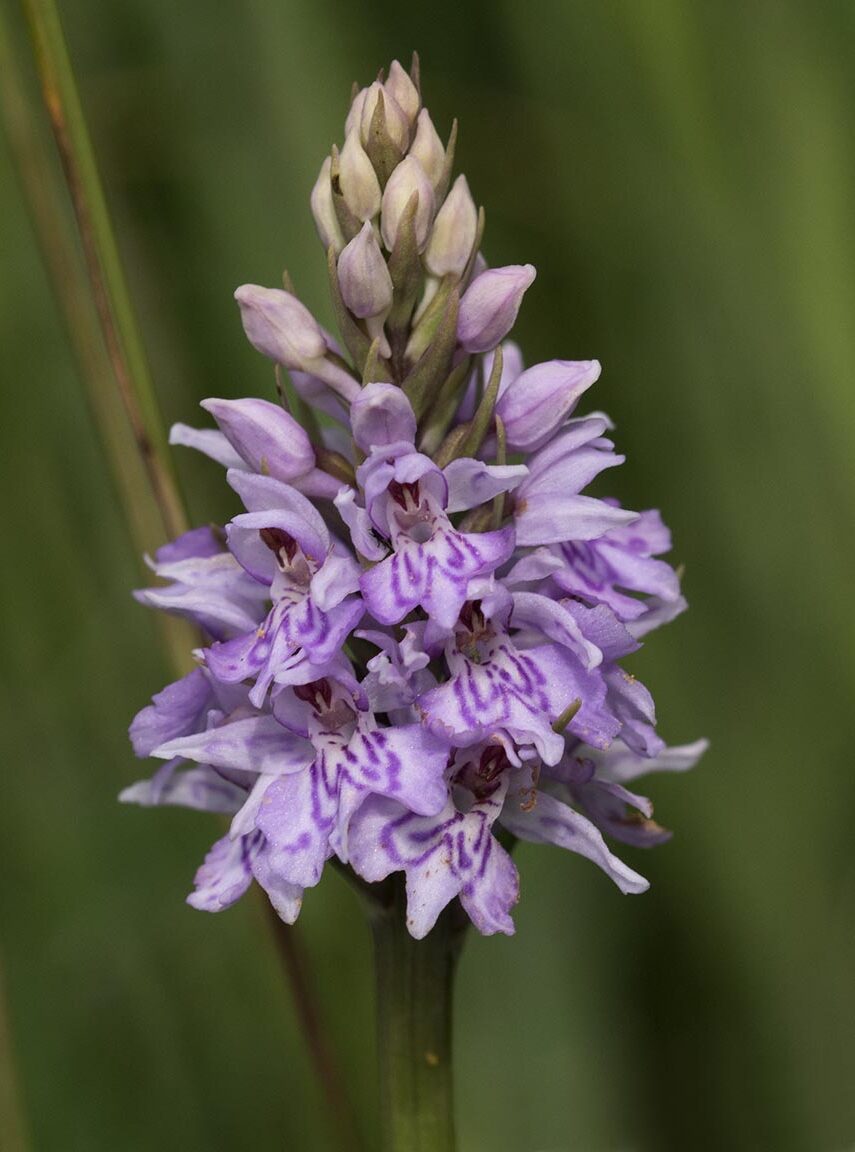
Common Spotted Orchid
As its name suggested, this is one of our most common orchids. You will it on grasslands, roadside verges, and dunes, flowering from June to July, extending to August at times.
The lip is deeply divided into three lobes, the central lobe of the is pointed and extends further than the squared-off lateral lobes. The colours of this orchid vary from white, and pink, to purple, marked with loops with some spots. Also spotted, are its leaves. Which, can be confused with the Heath Spotted Orchid.
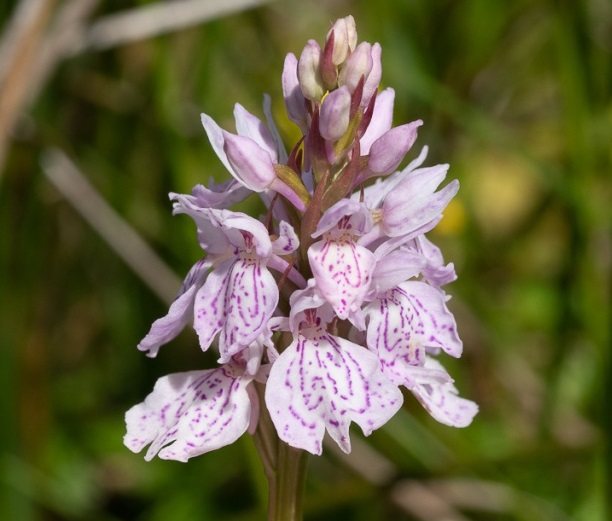
Heath Spotted Orchid
A similar plant to the Common spotted Orchid. The flowers are usually white to lilac and again are divided into three lobes. However, the central lobe does not extend past the two lateral lobes. The lip is more delicately marked with little dots, unlike that of the Common Spotted Orchid. Again, the leaves of this plant are spotted. Their shapes of them are an unreliable feature to set them apart from similar species.
This orchid can be found in the uplands on acidic soil from June to July.
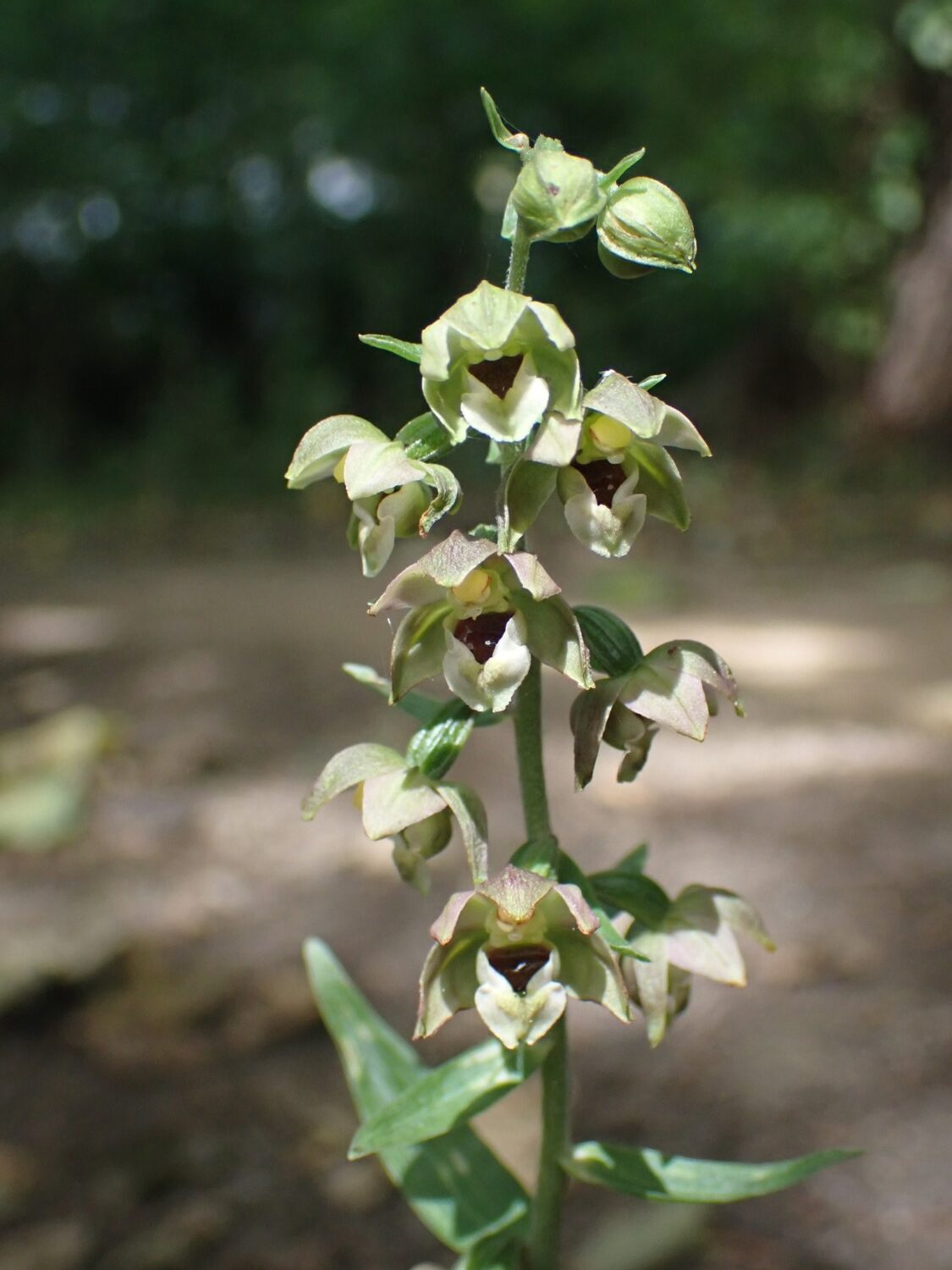
Broad-leaved Helleborine
An orchid that can grow to an impressive height, the Broad-leaved Helleborine can be found in woodlands and woodland margins.
Many downward-facing flowers are borne on a long spike. Their colours high variable from maroon to green. As its name suggests, the leaves are broad, and they spiral up the stem of the plant.
This species is one of the later flowering orchids, from July to August.
Did you know, we have an on-going orchid citizen science project? We need your orchid sightings in order to map out their distribution within the North East. Find out more by visiting our Discovering Orchids page. Due to your amazing recording effort last year, the Orchids of North of North East England has been publish, and is available for purchase here.
Visit our YouTube channel for videos on how to identify other North East orchids.